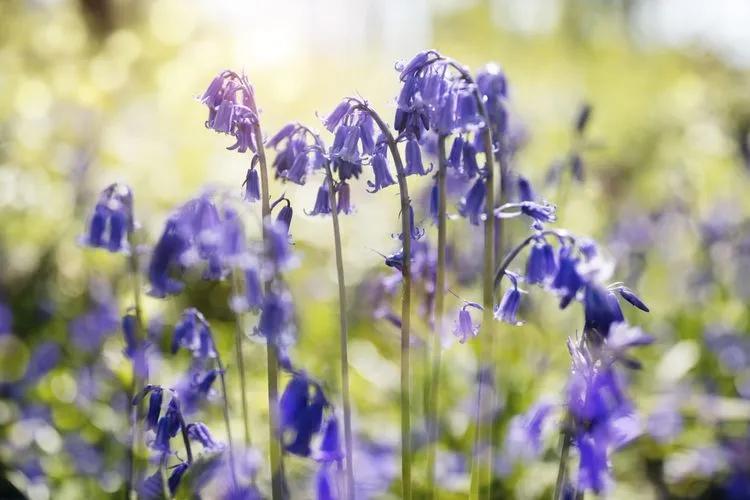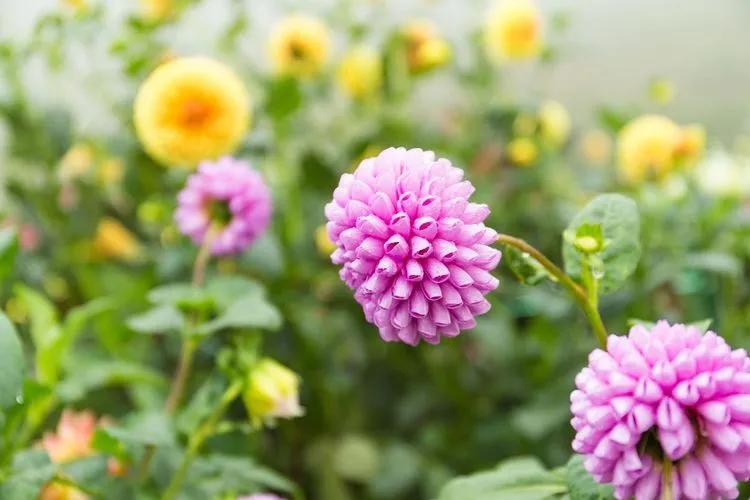Legends About Plants in Different Cultures
In ancient times, people were dependent on nature, so that plants played a crucial role in the lives of our ancestors. Plants were worshiped because they were so important for human lives, were sacred to gods, or embodied the gods themselves. This fondness resulted in a huge amount of myths and legends: stay tuned to learn some of the most interesting ones.
Bluebell

Sometimes this flower is called a ‘fairy flower,’ and this is for a reason. In Somerset, it was believed that bluebell woods were enchanted because of malicious fairies. The people should never go into these woods because fairies will bewilder them, and the person will get lost. The only chance to get away from this place is to meet someone.
There is a bunch of superstitions around this particular flower. In Devonshire, people believed that if you bring a bluebell inside, something terrible will happen. Death is also involved in those beliefs. For example, according to one of them, if a child picks the flower, they will be gone. Another belief claims that when a person hears bluebell bells ring, it means that they will die very soon.
Ivy

Now ivy is often used in wedding decorations because it symbolizes fidelity. This symbolism is kinda obvious due to ability of the plant to grow rapidly. Interestingly, ivy appears in famous medieval legend about Tristan and Isolde. Lovers were buried separately, but ivy grew out of their graves. Branches of two vines met and twined around each other. In this poetic legend, ivy illustrates not only fidelity, but something undying - love.
For ancient Egyptians, ivy was also a powerful symbol. As the shrub is evergreen, it embodied immortality and was considered a plant of Osiris, god of the afterlife and fertility.
Aconite

At first glance, this humble and pretty purple flower seems to be innocent. However, aconite is also known as 'plant arsenic,' 'queen of poisons,' or ‘wolf’s bane,’ and all these common names hint something. Hecateis is another wat to name this plant. If you are familiar with ancient Greek mythology, you know that it references Hecate, goddess of witchcraft.
That is why aconite was popular among witches. One of them was legendary Medea, well-known sorceress who tried to poison Theseus with this. Also, Athena turned Arachne into a spider by using aconite. Transformational qualities of this plant were mentioned not only in Greek mythology, but in Germanic legends as well. For example, the berserks consumed aconite to transform into werewolves.
Basil

Ancient Egyptians believed that basil helped the deceased to enter Paradise. That’s why this plant was found next to mummies, and it was also used as an embalming gel.
Ancient Greeks appreciated basil because of its medicinal qualities. They believed that it could cure venomous bites. This assumption was rooted in mythology. Basil is associated with serpent king basilisk, even their names are similar. The plant was a cure against the monster’s breath, bite, and even gaze. In India, basil was sacred to god Vishnu, whose wife Tulasi took the form of basil when she arrived on Earth. That’s why Hindus are afraid to harm this plant.
Chrysanthemum

This flower is native to China, but it is adapted so well in Japan that the Japanese think chrysanthemum is a local plant. In one legend, cruel Chinese emperor found out that a particular flower grew on nearby island. The flower seemed magical: people could create an elixir of life from its juice. But there was a serious obstacle – only someone with pure intention could pick a flower.
The emperor decided to send 300 young men and women to this island. At least few people from them should have pure heart, he thought. The end of the legend is vague because no one returned, and the emperor eventually died. But two things are clear, this nearby island was Japan, and all of this was about chrysanthemum.
Agave

You are probably familiar with this plant if you like to drink tequila because it is made from agave. Aztecs believed that this plant was a gift from the gods. The story started when Quetzalcoatl wanted to kill Tzitzimitl, goddess of the sky as she cast the world into darkness. She craved human sacrifices even for a smallest bit of light. But instead of revenge, Quetzalcoatl found Tzitzimitl’s granddaughter Mayahuel, goddess of fertility, and fell in love with her.
Unfortunately, Mayahuel was killed in a big fight. Gods wanted to console grieving Quetzalcoatl. That’s why agave started to grow in the place where his significant other one was buried. To cheer up Quetzalcoatl, they provided the plant with some hallucinogenic qualities. How nice of them!
FAQ
How Do Plant Legends Influence Cultural Traditions?
Plant legends shape traditions by giving certain plants symbolic meaning. Those stories influence how people use them in rituals, celebrations, and daily life, turning ordinary plants into cultural markers passed down through generations.
Each story is an excellent example of how ancient people liked to romanticize plants. Hope this information made you take a new look at some herbs. If you want to read more weird legends behind plants, you can check our article about flowers in ancient Greek myths.
